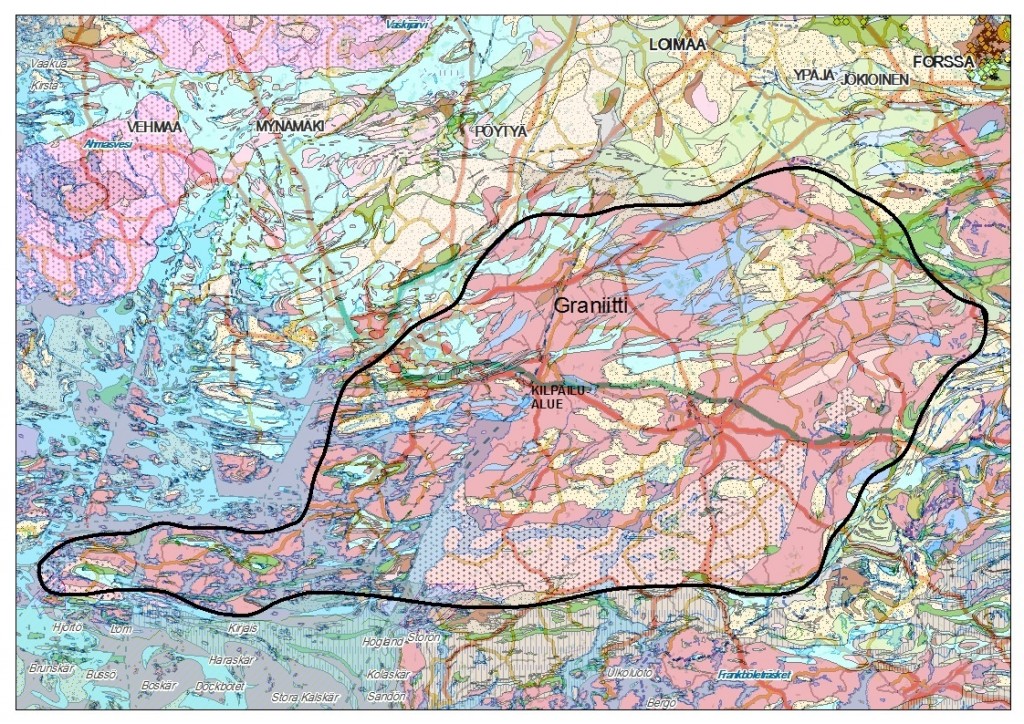If one asks a competitive orienteer to describe the terrains in Paimio region, the most likely answer will contain at least two terms: ”detailed” and ”bare rock”. But what do we find if we scratch the rocks of Louna-Jukola terrain a bit deeper under the surface? Let’s ask the best thinkable expert – a geologist.
According to Pekka Huhta, a geologist at the Geological Survey of Finland, the competition area of Louna-Jukola belongs to the extensive granite area of Southern Finland. This area stretches from the region of Somero in the east to the Archipelago Sea in the west. The age of this granite is 1.7–1.9 billion years.
– Lowest parts of the competition area are 15–20 meters above sea level, and they’ve risen from the sea only 1,500–2,000 years ago. So, through the eyes of a geologist, the area is pretty young, says Huhta.
Granite is a type of igneous rock, and one of the most common in Finnish bedrock. It consists of quartz, mica, feldspar and – at times – hornblende, which can be differentiated as grains on the surface of the rock. The colour, alternating from light grey to dark maroon, is mainly determined by the colour and amount of feldspar.
According to geologist Huhta, erosion in this kind of bedrock is minor. Water, ice and differences in temperature may fragment rock into pieces.
– The Jukola Relay will leave barely any marks to the bedrock. Orienteers will surely scratch the surface of the rock when making strides in the terrain, states Huhta.
So, you’ll be able to admire the gleam of granite and the named “detailed bare rock” when competing in Louna-Jukola next summer – yet, remember to keep yourself on the map!

Louna-Jukola competition terrain (“kilpailualue”) is located approximately in the middle of the extensive granite area, outlined in black.





























